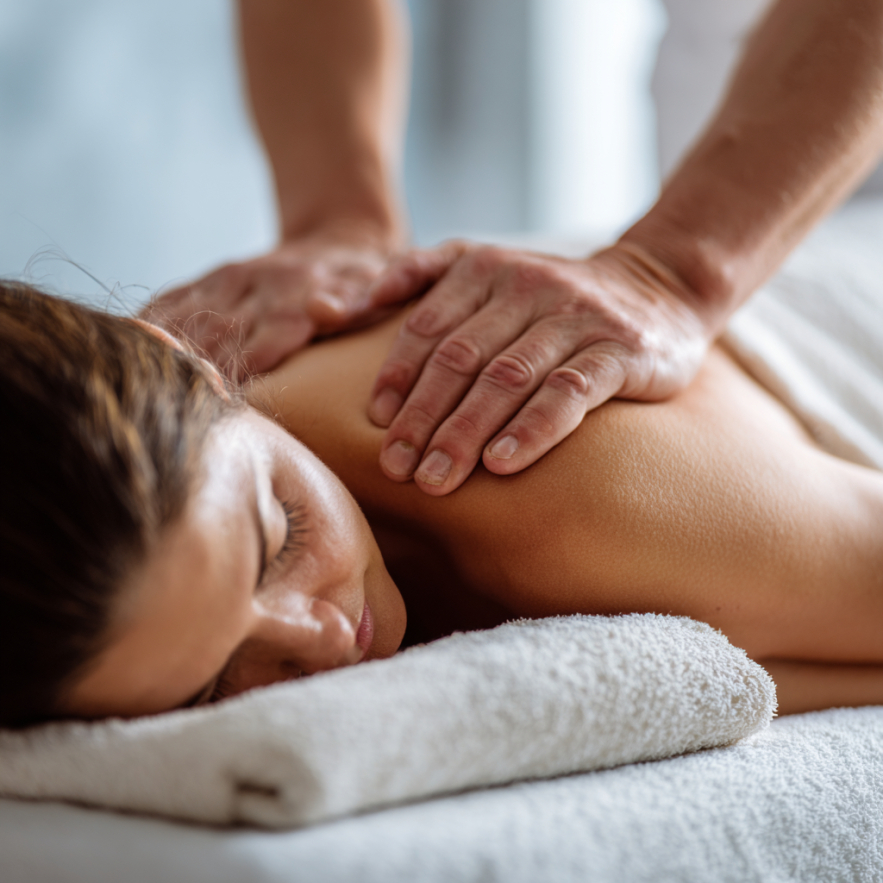Mental and emotional states are directly linked to the body. Anxiety, chronic fatigue, and stress often show up physically — tight shoulders, tense necks, shallow breathing, digestive issues. Massage doesn’t just relax muscles; it activates inner recovery systems by affecting the nervous and hormonal balance. The key is choosing the right technique and preparing for the session mentally and physically.
Why the body reacts so strongly to stress
When a person experiences anxiety or burnout, the body activates defense mechanisms: breathing quickens, muscles tense, circulation becomes uneven. This happens through the autonomic nervous system, which controls involuntary body functions. Over time, this constant tension becomes chronic and starts affecting even moments of rest.
Most people don’t realize how often they clench their jaws, hunch their shoulders, or stiffen their posture. These micro-spasms accumulate. Massage reconnects the mind and body. When a therapist touches tense areas, people often feel not just relief but also emotional responses — tears, irritation, deep calm, or drowsiness.
The parasympathetic system, responsible for rest and recovery, is activated during gentle massage. Heart rate slows down, breathing becomes even, and cortisol (the stress hormone) decreases. This helps the brain and body shift from a state of alert to one of repair and balance.
Massage also promotes the release of oxytocin, the hormone associated with trust and bonding. It eases feelings of isolation and disconnection, common in emotional exhaustion.
Which massage techniques help with anxiety
Not all massage styles are appropriate for high anxiety. What matters most is not intensity, but rhythm, softness, and a sense of safety. The most effective methods use surface-level work with no sudden pressure or forceful movements.
Sensory massage is one of the most beneficial. It involves slow, fluid strokes that mimic water or silk, often accompanied by calming music at 432 Hz and soft lighting. This shifts awareness away from racing thoughts and toward body sensations.
Lymphatic drainage is another suitable option. It uses gentle pressure along lymphatic pathways, reducing swelling and promoting relaxation. For anxious clients who feel physically “heavy,” this technique can be grounding and soothing.
The therapist’s breath and pacing matter too. Matching the client’s breathing can build trust and deepen the effect. This kind of synchronized presence is particularly helpful for those who feel disconnected from their body or emotionally overwhelmed.
If you’re curious how massage can support both relaxation and deeper physical release, check out “Deep tissue vs. Swedish massage: what’s the difference and when to choose each” — it offers a clear comparison and helpful guidance.
Techniques that work for burnout
Emotional burnout shows up as more than fatigue — it includes apathy, lack of interest, sleep disturbance, and mental fog. Massage in this case should act like a “soft reboot,” reactivating energy without overstimulating the system. Reflexology, especially focused on the feet and hands, works well here.
The soles of the feet contain points connected to internal organs and brain areas. Stimulating them can activate healing responses, even when the person doesn’t feel mentally “ready.” Clients often report clarity and ease after reflexology, even if they arrived feeling numb or low.
Craniosacral therapy is another effective technique. Gentle pressure on the skull, neck, and sacrum helps calm mental noise, relieve insomnia, and bring awareness back to the body. It’s especially helpful for those stuck in a mental loop or having trouble switching off.
It’s not only about the method — the therapist’s presence is crucial. Burned-out clients may resist touch, even if they consciously want help. A sensitive, adaptable approach that listens through the hands is key to making progress.
How to prepare for a massage under emotional stress
To get the most from a massage when emotionally strained, preparation matters. People in anxious states often stay in “threat mode,” which makes it hard to trust even in a safe setting.
Let your therapist know about your state beforehand. A trained professional will adjust pressure, pacing, oil temperature, and even background music. Comfort elements like a blanket, low lighting, and the option to close your eyes make a big difference.
Drink a glass of water before your session and spend 5–10 minutes simply breathing. Don’t try to force relaxation — just observe your sensations. Even clenched jaws or finger tremors are valuable information.
Tears, yawns, or unexpected emotions during massage are normal. They’re signs the body is releasing long-held tension. Let them come. A skilled therapist sees this as healing, not a problem.
Oils and techniques that enhance the effect
Certain essential oils greatly enhance the anti-anxiety effects of massage. Lavender, neroli, frankincense, and marjoram are particularly effective. They lower activity in the amygdala — the brain region responsible for fear and overreaction.
Technique-wise, long flowing strokes, neck and shoulder work, palm and foot massage — all applied evenly and calmly — are best. Gentle background music and full permission to “switch off” increase impact.
Heated herbal pouches at the end of a session are highly recommended. Filled with chamomile, lavender, or St. John’s wort, they act through both skin and scent, adding warmth and depth to the treatment.
Consider ending with a soft wrap using a towel or blanket. This adds a sense of containment and helps the nervous system stay relaxed longer. Especially valuable after deeper emotional release.
Questions and answers
Yes, combining them often brings better results. Massage helps the body release tension, while therapy works on the mental roots.
Once or twice a week is ideal, especially with gentle techniques. Monitor your body’s response and adjust as needed.
That’s normal. Tension leaves, making room for emotions that were suppressed. Let them come — it’s part of healing.

